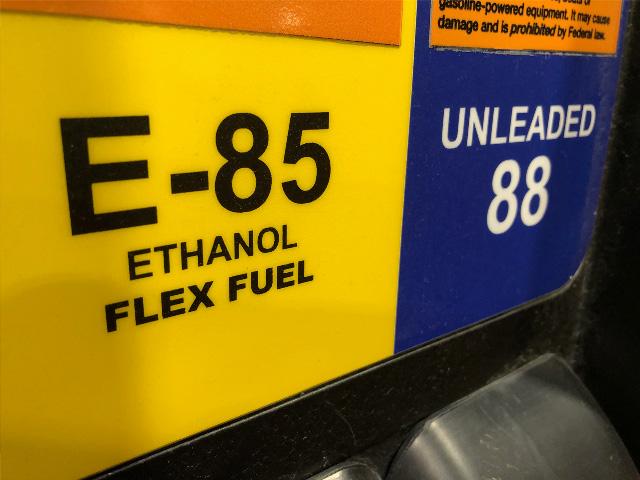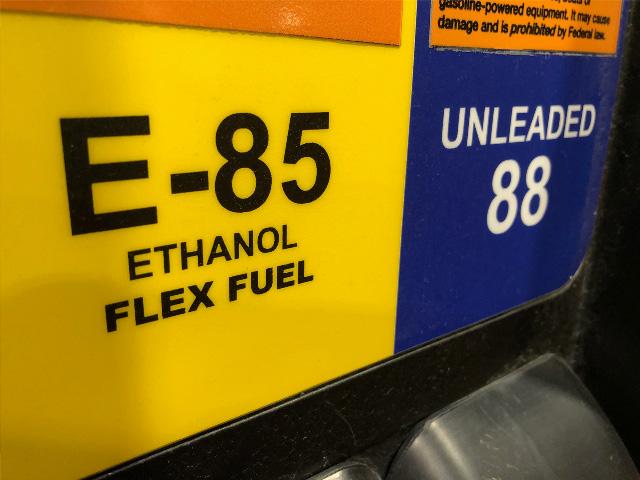Ag Policy Blog
When It Comes to Fuel, EVs Have All the Answers for Biofuel Critics
Let's label this an opinion piece right from the start.
I've grown a little tired in my curmudgeonly journalistic career over the coastal arrogance that defines environmental high ground in our country.
I live in Iowa and from time to time I report on presidential candidates, listening for anything they may have to say about agriculture and, yes, ethanol as well. I hear members from one party praise ethanol, but bash other renewable energy solutions. A second party loves renewable energy solutions, but its environmentally conscious insiders disdain biofuels.
Every now and then I also get to read shots at "flyover country" about ethanol or biofuels in general.
That leads to a guest essay published June 6 in the New York Times, "The Climate Solution That's Horrible for the Climate." Once again, a Miami, Florida-based writer -- Michael Grunwald -- had to remind us that "corn ethanol and soy biodiesel accelerate food inflation and global hunger, but they're also a disaster for the climate and the environment."
That was followed up by the World Resources Institute on July 3 declaring, "EPA's New Renewable Fuel Standard Will Increase Global Carbon Emissions - Not Lower Them." The writer, a Berkeley, California, resident, Dan Lashof, also declared there is strong evidence showing the RFS is going to increase emissions "while hindering food production."
The solution for Grunwald and Lashof is that electric vehicles (EVs) are the way to go forward. Lashof noted, "While all energy projects require land, generating renewable energy for EVs is dramatically more efficient and less carbon-intensive than producing crop-based biofuels. For example, even if prime farmland is dedicated to solar panels to power an EV, the carbon opportunity cost per mile is hundreds of times lower than using crop-based biofuels to power an internal combustion engine vehicle."
Yes, corn and soybeans take up a lot of land in our country. Combined, the two crops basically account for about 177.5 million acres this year, according to those new USDA acreage numbers. Grunwald and Lashof seem to believe biofuels are the biggest drivers of this acreage. Ethanol made from corn takes up about 35% to 40% of all the corn produced, depending on whether farmers had good yields and weather. Still, even after ethanol refiners have squeezed out the ethanol from the kernel, they are left with a distiller's grain that becomes livestock feed, especially for beef and dairy cattle.
It's a hard case to declare biofuels are accelerating global hunger when the U.S. exports half of its soybeans to China and we still have as much as 2.2 billion bushels of corn and 600 million bushels of wheat at the end of the marketing year that couldn't get shipped overseas.
Eighteen years ago, President George W. Bush signed the first of two pieces of legislation creating the Renewable Fuels Standard (RFS). It was done partially because oil companies refused to blend ethanol into their gasoline even though ethanol burns cleaner out of the tailpipe. The RFS changed the economic dynamics in the Midwest and Plains states. It sparked billions of dollars in investment in renewable energy that lowered carbon emissions. The law became one of the first drivers in the U.S. to actually count greenhouse-gas emissions and created a cottage industry of people in the biofuels industry who are obsessed about lowering carbon scores. State laws, led mainly by California, have driven that obsession with lower carbon even further.
Right now, carbon emissions from ethanol are about 46% lower than gasoline, according to the Renewable Fuels Association.
The Biden administration, and a lot of Americans, want to go electric. That's fine, but there is no real roadmap yet on exactly how to get there. Just today, NPR had a story about the challenges of trying to recharge an EV on a long trip. I listened to that story coming into Omaha after driving the past two days from Calgary, Alberta, or about 1,400 miles. I don't know how long I'd still be on the road if I had to rely on using chargers somewhere in rural Montana or Wyoming.
P[L1] D[0x0] M[300x250] OOP[F] ADUNIT[] T[]
By the way, I pulled into a fuel station off Interstate 80 in York, Neb., on Thursday morning and filled with E85 at $2.29 a gallon, after paying an average of $3.79 for E10 pretty much my entire trip. I was greatly pleased.
Mathematically, we're still a long way from an EV world. There are an estimated 278 million automobiles in the U.S., of which somewhere between 2 million and 2.5 million are electric vehicles. So electric vehicles right now are in the ballpark of 1% of the total U.S. auto fleet.
And that means 99% of cars, pickups and trucks still run on liquid fuel. Basic math tells us we're not converting our fuel pumps at convenience stores to charging stations overnight.
While people want to rail on ethanol and biofuels, they also have an element of social justice that also isn't talked about as much.
Louisiana has a roughly 85-mile area from Baton Rouge to New Orleans dubbed "cancer alley" because of more than 200 petroleum chemical plants and refineries. While the petroleum industry reaps its profits, the NYT and other national media frequently have reported on the pollution impacts and social justice challenges created by such a high concentration of petroleum plants in a small area of the country -- an area where a lot of low-income people also happen to live with poor health care options as well.
Ethanol plants are scattered throughout small towns and cities in the Midwest. Six states -- Iowa, Nebraska, Illinois, Minnesota, South Dakota and Indiana -- make up the bulk of ethanol production, but there are just under 200 ethanol plants that produce right now about 18 billion gallons of fuel. Ethanol plants are dispersed largely to tie in with corn production so having a concentration of refineries in a small stretch of space doesn't make sense. To my knowledge, no community has ever been dubbed a cancer hotspot because of ethanol.
Still, Grunwald declared "electric vehicles have become better, cleaner and more economical." Basically, we should cast out any policy for biofuels because electric vehicles will take care of the environmental issues for us.
Yes, a Tesla or Chevy Bolt or Nissan Leaf may be cleaner and more economical for a middle-class suburbanite in San Francisco, New York or Miami. But it's arrogant to suggest there are no environmental impacts here. It seems for average Americans, the electric-vehicle risks are largely out of sight, out of mind. After all, most of the environmental and health damage will be borne by miners and residents in low-income countries.
The battery for a typical electric vehicle uses somewhere between 60 and 140 pounds of certain minerals such as lithium, manganese and cobalt.
The Washington Post reported last month about mining manganese in South Africa. "The industry's demand for manganese has quintupled over the past five years, and analysts predict it could increase a further ninefold by 2030." And it turns out that mining for manganese is toxic for workers and "the industry has shown little consideration of these occupational risks."
Cobalt miners in places such as the Democratic Republic of Congo are "laboring in slave-like conditions," NPR reported in February. A Harvard researcher in that article called the conditions "sub-human" Cobalt is also apparently toxic to touch or breathe.
Lithium is obviously a major element to "clean" electric cars. Friends of the Earth, not exactly friends of biofuels either, issued a report on lithium in Europe, noting that most of the mining is in South America and China. Production is only beginning to fill the capacity demands for the coming decades. But lithium extraction drains water resources and requires, of course, toxic chemicals to process the lithium. And it's horrible for soil.
"The release of such chemicals through leaching, spills or air emissions can harm communities, ecosystems, and food production. Moreover, lithium extraction inevitably harms the soil and causes air contamination," Friends of the Earth recently stated.
China also is looking to corner the market on lithium, as reports cite possible corruption in South American countries selling land to Chinese investors where lithium is expected to be mined.
While the annual United Nations Conference of the Parties (COP) meetings talk about emissions, nobody has spelled out a new paradigm to protect people in under-developed countries from mining exploitation for these "green" non-renewable minerals that will be extracted from the Earth in the coming decades.
I don't want to declare ethanol doesn't have its environmental problems. Fertilizer from corn production is one of the drivers for high loads of nitrogen and phosphorus in waterways, leading to corn's contribution to the "dead zone" in the Gulf of Mexico. Soil erosion in the Midwest and Plains states is higher than it needs to be as well.
The difference with biofuels in the United State is that policies further lowering the carbon footprint of biofuels and their crop feedstocks can help reduce fertilizer losses through "climate-smart" farming practices. These practices are growing, but the pace can quicken. The Inflation Reduction Act, for instance, provided $19.5 billion for USDA to expand climate-smart practices in its conservation programs over the next several years. The money has to go to practices that lower emissions or sequester carbon in the soil. The main trade associations for corn, soybeans and other commodities all have embraced the funding of these practices.
If EPA is focused on lowering greenhouse emissions, the agency also could also help further lower emissions from liquid-fuel vehicles by allowing consumers to convert a car or pickup to run on higher blends of ethanol as well. Congress should actually make that happen, especially since countries such as France allow it.
For the record, I drive a pickup that runs on as much as 85% ethanol. I'm proud that I have a vehicle that can run on as much ethanol as allowed -- if I can find a fuel station with E85 pumps. I'd absolutely love my mileage per gallon to be higher than it is, but I'm doing as much as I can as an individual consumer to buy renewable fuel over fossil fuels.
No, ethanol is not a perfect fuel, but it is not the environmental or economic disaster as portrayed as well. In reality, there is no perfect energy solution, renewable or otherwise. Just ask the people who are mining the minerals so Americans can drive "cleaner" vehicles.
Chris Clayton can be reached at Chris.Clayton@dtn.com
Follow him on Twitter @ChrisClaytonDTN
(c) Copyright 2023 DTN, LLC. All rights reserved.






Comments
To comment, please Log In or Join our Community .